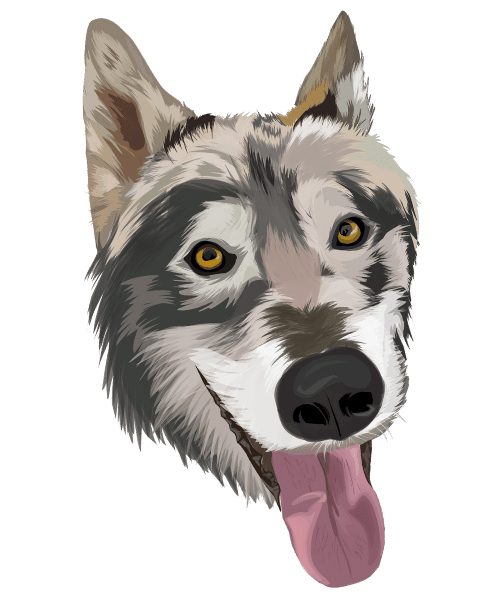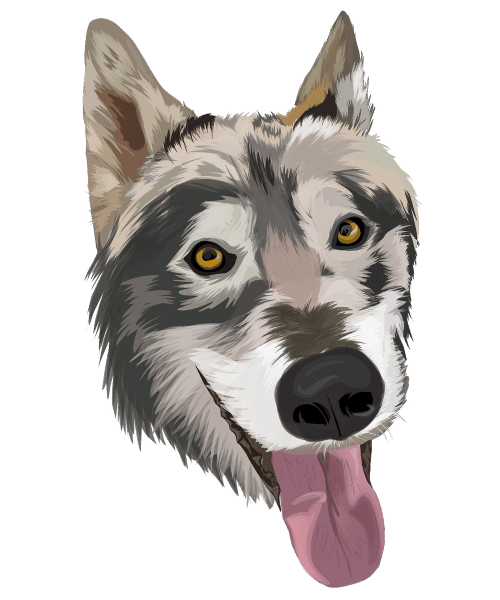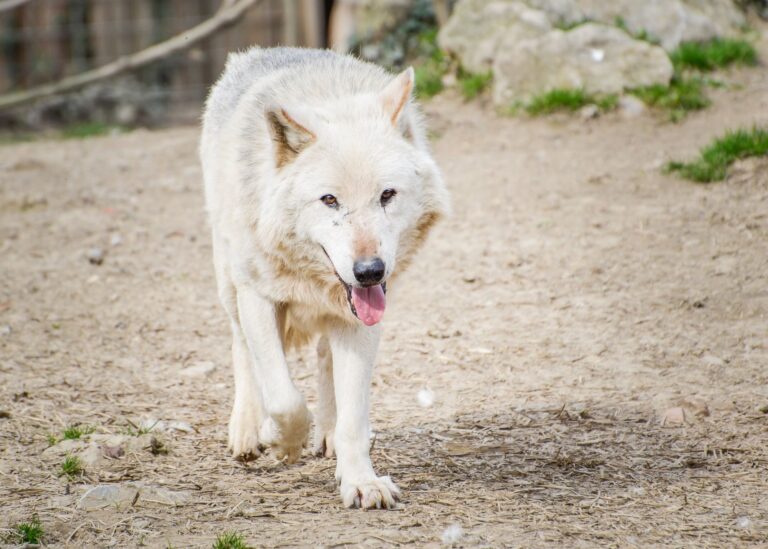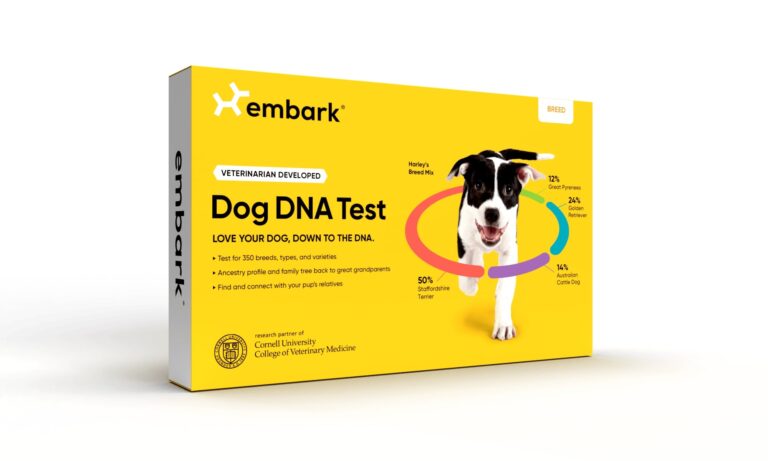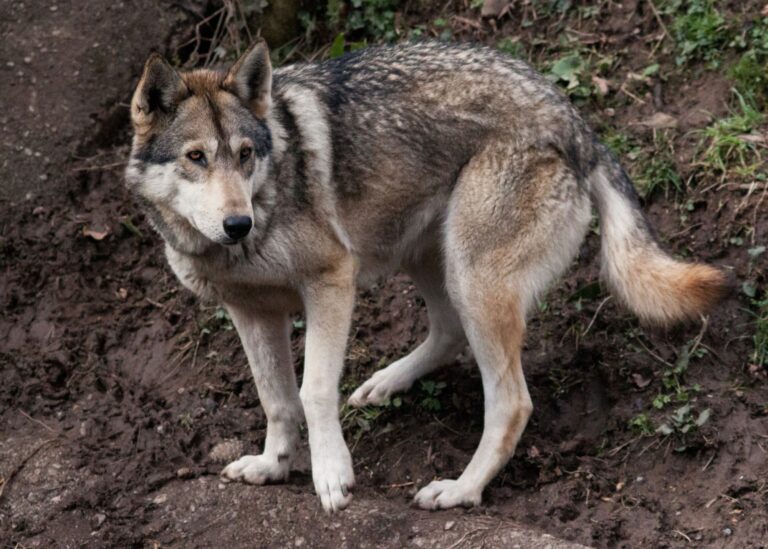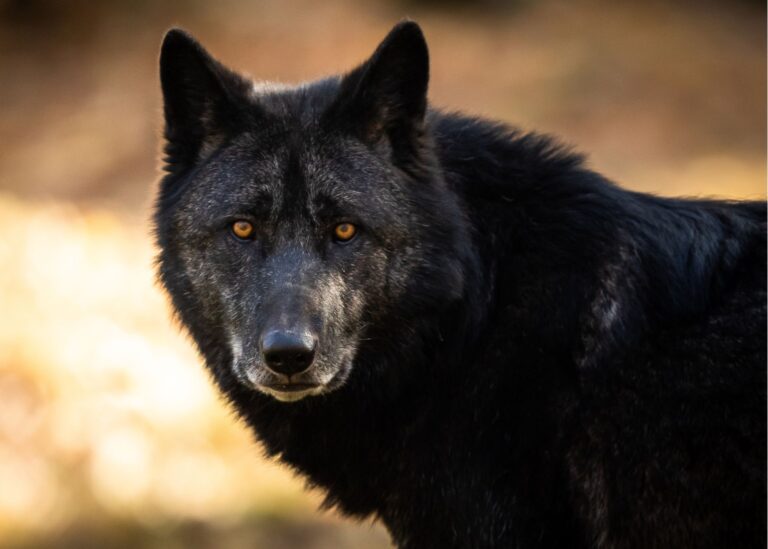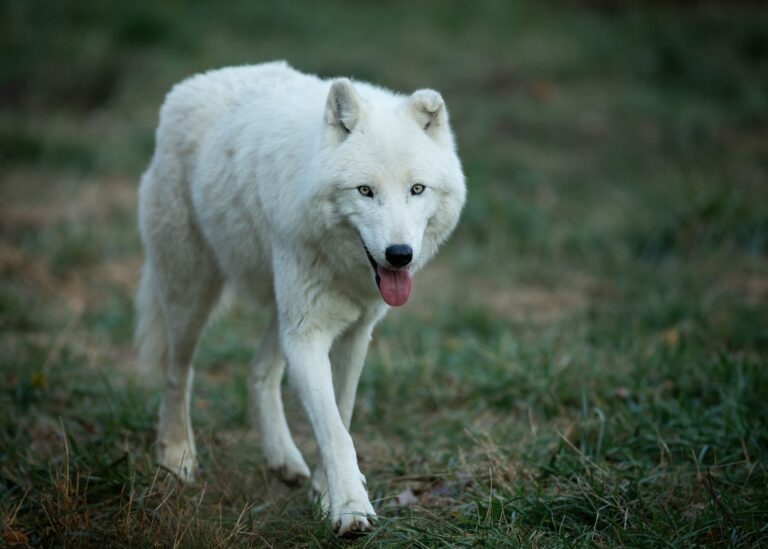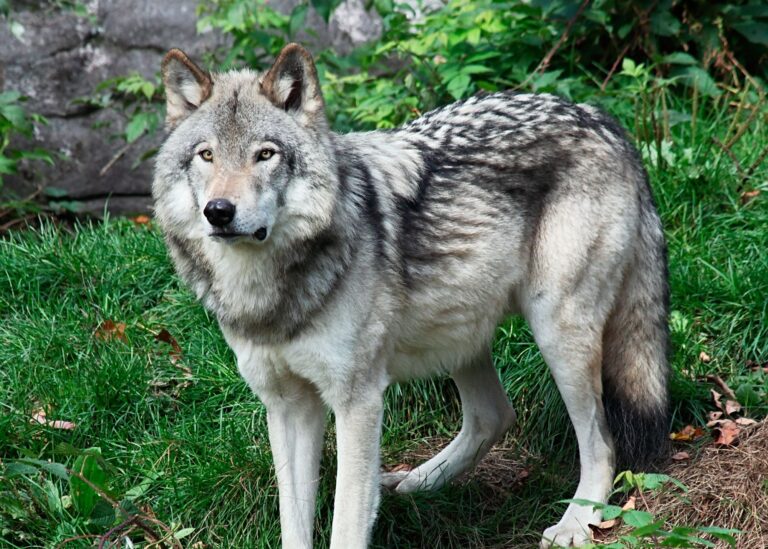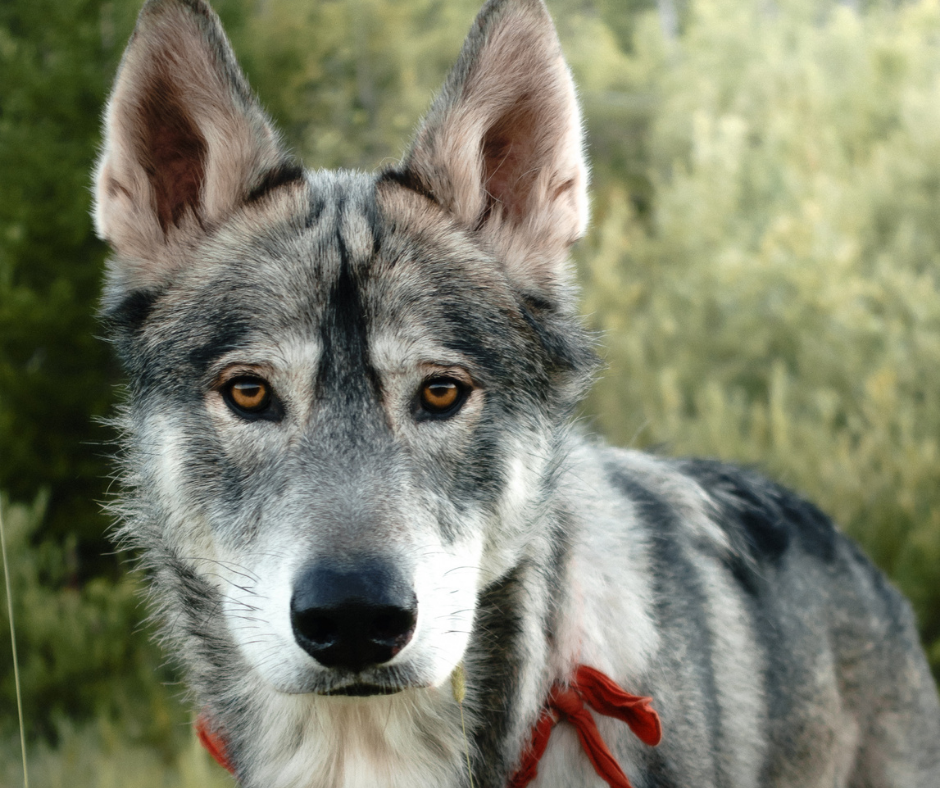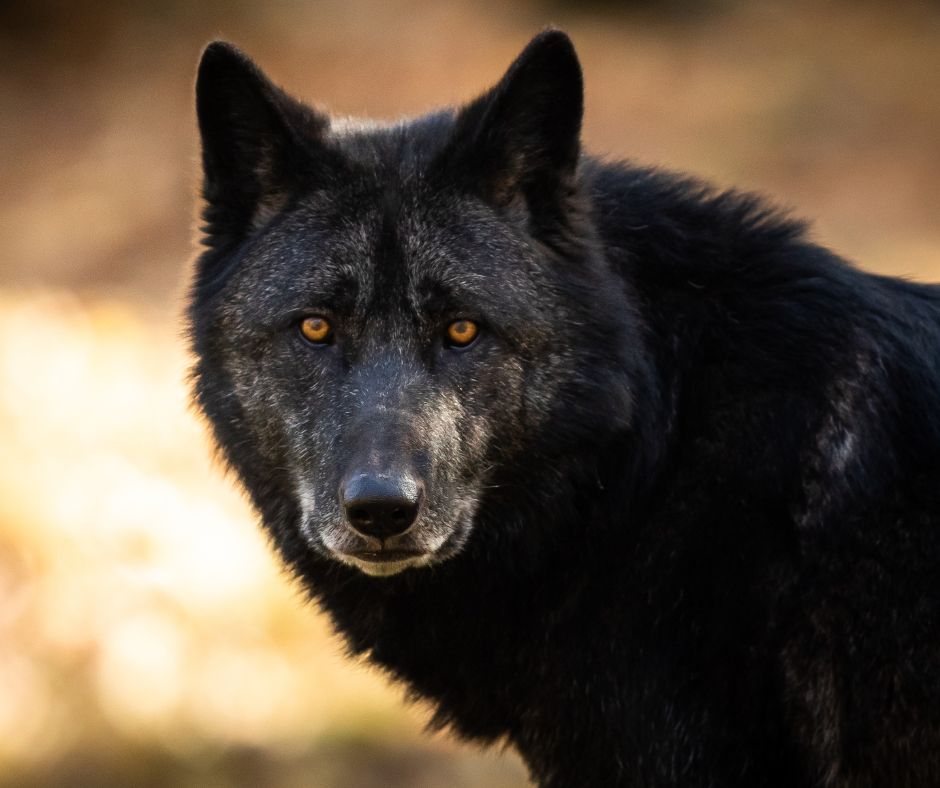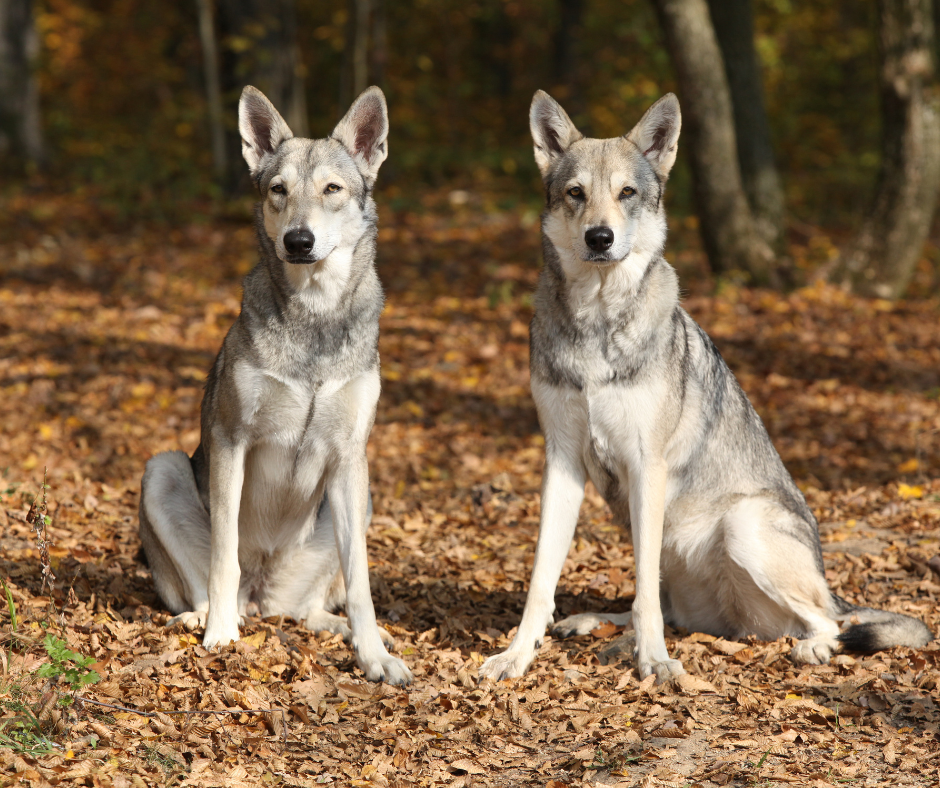Owning A High Content Wolf Dog (Traits, Training & Care)
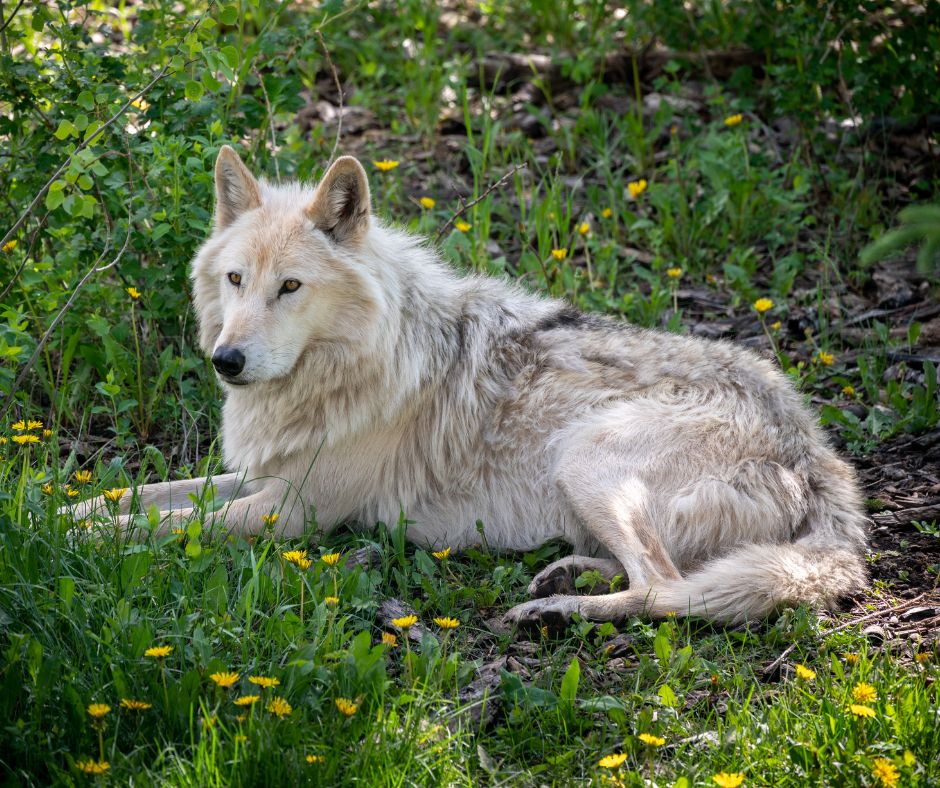
Have you ever wondered what high-content wolf dogs are truly like as pets? In 2018, Jake adopted Cruze, our mid-content wolf dog, and since then, I’ve been learning as I go. He’s insanely smart, but he’s also come with plenty of challenges.
Over the years, I’ve realized there aren’t a lot of resources out there for people who actually live with wolf dogs or are thinking about getting one. So I wanted to share what I’ve learned. The good, the tough, and everything in between.
In this post, I’ll break down what it’s really like to own a high-content wolf dog, from their unique behaviors to the specialized care they need, so you can get a better idea of what life with one actually looks like.
Table of Contents
ToggleWhat is a High-Content Wolf Dog?
A high-content wolf dog comes from generations of selective breeding between wolf dogs or a wolf dog and a domestic dog. They’re usually several generations removed from a pure wolf but still look and act almost identical to one, with only subtle dog traits setting them apart.
People love to throw around the term “wolf hybrid” whenever they see a dog that looks even a little wolfy, but true wolf hybrids are actually pretty rare.
When talking about wolf dogs, you’ll often hear the term “content.” This refers to the percentage of pure wolf genes in an animal’s lineage, either through genealogy or DNA testing. The higher the content, the closer they are to a pure wolf.
Unlike low-content wolf dogs, which have a small percentage of wolf DNA, high-content wolf dogs are usually between 85% and 99% wolf. That means they don’t just look more like wolves—they act more like them too, with behaviors and instincts that are far from what you’d expect in a typical dog.
The “Filial Generation Number” (or F-gen) tells you how many generations an animal is removed from a pure wolf ancestor. It’s basically a way to track how close a wolf dog is to being a full-blooded wolf. The system runs from F1 to F5, with F1 being the direct offspring of a pure wolf and a dog (or another wolf dog), and F5 meaning the animal is five generations away from a pure wolf.
Even as the generations progress, some wolf dogs still look strikingly wolf-like. This is often due to selective breeding, where breeders prioritize certain traits (like coat, nails, eye shape, and movement) to maintain a wild appearance. So even an F3 or F4 wolf dog might look almost identical to a pure wolf, despite having some domestic dog in their lineage.
That said, lower-percentage high-contents, like an 85% F1, might start showing subtle dog-like traits such as slightly bigger or differently set ears, a slightly shorter or thicker muzzle, a bit of a curve in the tail, or a stockier build. Even a high-content F3 at 90% might have tiny deviations, but for the most part, they still carry strong wolf characteristics.
Why does this matter? Because a wolf dog’s behavior isn’t just about their percentage, it’s also about their generational distance. An F1 high-content will often be much more challenging to handle than an F3 or F4, even if their wolf percentage is similar. Understanding both percentage and F-gen helps give a clearer picture of what to expect in terms of looks, temperament, and care.
The only way to know for sure how much wolf DNA your dog has is though an Embark DNA test.
Physical and Behavioral Characteristics of a High-Content Wolf DOg
Physical Traits
High-content wolf dogs have a blend of physical features from both wolves and dogs. They tend to have a strong, sturdy build with a lean physique that allows for excellent agility. Their coats can vary widely, from dense and fluffy to sleek and coarse, often displaying a variety of colors like grays, blacks, and browns.
One of the most interesting things about high-contents is that their reproductive traits are just like pure wolves. Both males and females follow the same natural cycles, and when they have puppies, the pups are usually born solid dark in color, looking almost identical to wild wolf pups. As they grow, their coats lighten and develop into the more familiar wolf-like patterns we recognize.
Behavioral Traits
That said, they’re also capable of forming incredibly deep bonds. They’re pack animals at heart, which means they thrive when they have a close-knit group—whether that’s with their humans or other canine companions. Once they trust you and consider you part of their pack, that bond is strong, loyal, and unlike anything you’d experience with a typical dog.
High-content wolf dogs are naturally more timid and wary than aggressive when it comes to humans. If they feel threatened, their first instinct is usually to run or hide rather than fight. But, like any canine, if they’re cornered with no escape, they might bite as a last resort to defend themselves.
Another thing to keep in mind is that high-contents are often prone to claustrophobia. They don’t do well in confined spaces, so anything that makes them feel trapped needs to be handled with extra care.
And then there’s the destruction factor. Even lower-percentage high-contents can be crazy destructive and struggle with separation anxiety, which means leaving them alone in the house unsupervised is usually a disaster waiting to happen.
Caring for High-Content Wolf Dogs
Exercise and Mental Stimulation
Some great ways to keep them engaged include:
- Puzzle toys: Interactive puzzle toys like the Outward Hound Dog Brick or Nina Ottosson puzzles challenge their problem-solving skills and keep boredom at bay. Even simple DIY options, like hiding treats in a muffin tin under tennis balls, can make them think.
- Training sessions: Regular training isn’t just about obedience, it’s a mental workout. Try incorporating trick training, agility exercises, or advanced recall games to keep their minds sharp while strengthening your bond.
- Hide and seek: Hide their favorite treats or toys around the house or yard and let them sniff them out. You can also hide yourself and call their name (Cruze loves this game!) Plus it helps them tap into their natural scenting abilities.
- Food-dispensing toys: Slow feeders, treat balls, and puzzle feeders like the Kong Wobbler make mealtime a challenge instead of just a routine. Freezing food inside a Kong or marrow bone adds an extra layer of difficulty.
- Socialization: Safe interactions with other dogs provide both mental stimulation and important social skills. Off-leash play in a secure area, supervised pack walks, or even just parallel walking with a dog they trust can be beneficial.
Socialization and Training
Proper socialization and training are key to shaping a high-content wolf dog’s behavior, and the higher their wolf content, the more crucial it becomes. The window for effective socialization gets smaller as their wolf percentage goes up, so starting early and staying consistent is everything.
If you want a wolf dog that’s confident, well-adjusted, and able to be your companion in different settings, daily socialization isn’t optional, it’s a must!
Walks are a great way to expose them to new experiences. You’ll have plenty of chances to introduce them to different people, dogs, and environments, helping them get comfortable with all kinds of sights, sounds, and personalities.
Regular exposure to new things can go a long way in reducing skittish behavior and building confidence, making a huge difference in how they handle the world around them.
Socialization takes time, so patience is key. Use positive reinforcement (treats, praise, and encouragement) whenever they stay calm and relaxed in new situations. Helping them build positive associations with unfamiliar experiences will make a huge difference in their ability to navigate the world with confidence.
Diet and Nutrition
High-content wolf dogs do best on a diet that mirrors what wild wolves eat. They need a protein-rich, balanced diet with the right vitamins and minerals to keep them healthy and thriving.
The foundation of their diet should be lean meats like beef, bison, venison, and poultry. Organs like liver, kidney, and heart are also super important since they’re packed with essential nutrients, including vitamins, minerals, and amino acids that support overall health.
If you’re wondering what exactly to feed your wolf dog and how to make sure they’re getting the right nutrition, check out my blog post on diet for a more in-depth breakdown!
Building Trust and Preventing Aggression
The Power of Hand Feeding
To help with bonding and socialization, breeders of high-content wolf dogs pull the puppies early and bottle-feed them. This step is super important for getting them used to humans and other animals.
Even with early socialization, though, high-contents can still be reactive and sensitive to everyday things. Simple stuff like riding in the car or hearing the microwave beep can trigger big responses.
One of the best things you can do to build trust early on is hand-feeding your wolf dog. At mealtime, place the food in your palm and let them eat directly from your hand. This simple act helps them see you as their provider and protector, reinforcing your bond.
While hand-feeding, take the chance to gently touch their ears, paws, head, and other parts of their body. This helps them get used to human touch and builds a positive association with handling, something that’ll be really helpful down the road!
Leash Training
Start by clipping the leash on and just letting them drag it around the house at their own pace. This helps them get used to the feel of it without any pressure. Once they seem comfortable, you can gently hold the leash while walking indoors, keeping things calm and relaxed.
Taking it slow builds confidence and helps make future outdoor walks way less stressful. Just remember, patience is everything! Every pup will adjust at their own pace, so don’t rush the process.
Secure Outdoor Enclosures for High-Content Wolf Dogs
High-content wolf dogs have strong predatory instincts and incredible agility, so they need a large, secure outdoor enclosure that allows them to move freely and explore while keeping them safely contained. Without enough space and stimulation, they can become frustrated and destructive.
High content wolf dogs are agile and skilled jumpers, so a tall fence is an absolute necessity. A minimum height of 6 feet is recommended to prevent them from leaping over and escaping. If they see a way out, they’re likely to take it.
Space is just as important as security. High-contents aren’t suited for small areas, they need room to roam. An enclosure of at least an acre gives them the freedom to run, explore, and engage in natural behaviors, which helps prevent boredom and promotes a healthier, more balanced lifestyle.
Reinforcing the enclosure is just as important as building it. High-content wolf dogs are strong, smart, and determined, so preventing escapes takes extra planning. They may try to dig under or chew through fencing, so using sturdy, durable materials is a must.
To keep them from digging out, install dig guards along the bottom of the fence. Adding lean-ins (wire mesh angled inward at the top) can also help prevent climbing and chewing. The stronger the enclosure, the safer they’ll be.
Beyond security, the enclosure should also be enriching. Adding natural elements like trees, shrubs, and varied terrain can make it feel more like a wild habitat and encourage exploration. Providing logs, platforms, or structures for climbing and hiding gives them opportunities to engage in natural behaviors, keeping them mentally and physically stimulated. A well-designed enclosure doesn’t just keep them contained—it helps them thrive.
The Legal Aspect of Owning a High Content Wolf Dog
The legality of owning a high-content wolf dog depends on where you live. Some places have strict regulations and require special permits, while others ban them completely.
Before bringing one home, it’s absolutely necessary to research the laws in your area. Not only can owning an illegal wolf dog lead to hefty fines, but in some cases, they can be confiscated (and rehoming a high-content is incredibly difficult, if not impossible). Knowing the rules ahead of time can save you from a heartbreaking situation down the road.
The Importance of Responsible Ownership
Wolf sanctuaries and rescues are constantly overflowing with wolf dogs because backyard breeders sell them to people who have no idea what they’re getting into. These aren’t easy animals to own, and when owners realize they’re in over their heads, many end up surrendering them.
The harsh reality? Thousands of wolf dogs are euthanized every year because there just aren’t enough sanctuaries, space, or resources to take them all in.
To stop this cycle, potential owners need to be fully educated on what owning a wolf dog actually means. It’s a massive commitment, and without the right setup, knowledge, and dedication, things can go south fast.
Before bringing one home, do your research, and not just on their care but on their behavior, legal restrictions, and long-term needs. Wolf dogs are high-maintenance, high-energy animals that require an owner who is 100% prepared to put in the time, effort, and resources to help them thrive.
High Content Wolf Dogs FAQ
Can high content wolf dogs be kept in urban environments?
Due to their unique needs, high content wolf dogs are better suited to spacious, rural settings with secure enclosures. Urban environments may not provide the necessary space and stimulation they require.
Do high content wolf dogs get along with other pets?
High-content wolf dogs may have strong predatory instincts, making them less compatible with smaller pets like cats or small dogs. Early socialization and careful introductions can help in some cases.
The Extraordinary Bond with a High Content Wolf Dog
Despite the challenges of owning a high content wolf dog, those who form a deep bond with these animals often describe it as a once-in-a-lifetime experience. The connection you form with such an intelligent, instinct-driven animal is something truly special (but it comes with a ton of responsibility).
If you are thinking about owning high content wolf dog, I hope this helped you understand the requirements necessary to make sure they are in the right home.
Just remember that all wolf dogs need much more attention, patience, and training than any domestic dog. I do recommend you educate yourself thoroughly before deciding to have a wolf dog in your life as it is a huge adjustment.

